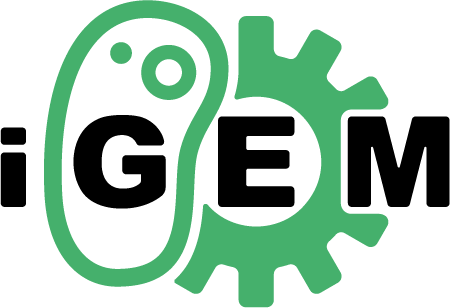Art & Design: Unleash your creativity in synthetic biology via our newest iGEM Village
“After a certain high level of technical skill is achieved, science and art tend to coalesce in aesthetics, plasticity, and form. The greatest scientists are artists as well.”
The newly launched Art & Design Village icon.
Since the earliest days of iGEM, many iGEM teams have created works of art in the lab, either as a focus for their project, or simply as an expression of what they saw as beautiful and inspiring in nature. Indeed, as early as 2004 the UT Austin team developed the world’s first biological photographic film. This is not unusual in the field of synthetic biology, where art and design are often integral to the process of engineering biology.
This year, we are excited to announce the addition of a new iGEM Village: Art & Design. We envision the Art & Design Village as a place where the synbio community can explore how art and design can contribute to the enrichment of peoples’ lives and culture, and bring greater understanding to those inside and outside of the synthetic biology universe as to how synthetic biology can be good for the world.
Art and design can enable new possibilities for the future of synthetic biology. How could your team unleash its creativity in advancing synthetic biology innovations? What is your vision for creating new synthetic biology solutions with art and design?
We encourage you to consider Art & Design when selecting a Village for your project. For inspiration, check out these examples by previous iGEM teams:
CAFA_China 2022 (China) explored possibilities between synthetic biology and artistic creation in their project focused on the “kill switch”, a biological system that causes cell death under certain conditions.
Silver Medal, Overgrad Division.
Cornell 2022 (United States) developed “MicroMurals”, a project that utilizes genetically engineered microbial paints to create bio-art as an avenue to initiate discussions about synthetic biology with people at all levels of expertise, interest and familiarity.
Gold Medal, Undergrad Division.
EPFL 2022 (Switzerland) improved cellulose aerogels using recombinant silk proteins to produce a modular, high performance insulation material that is fully biodegradable.
Winner Best Biomanufacturing Project, Best Sustainable Development, Overgrad Division.
UMA_MALAGA 2021 (Spain) engineered the yeast Yarrowia lipolytica to transform waste cooking oil into biopaints for oil painting.
Silver Medal, Undergrad Division.
Stanford-Brown-RISD 2018 (United States) designed a habitat from fungal mycelium and cyanobacteria that could potentially be used to grow a shelter on the planet Mars.
Nominated for Best Manufacturing Project, Undergrad Division.
UCAS-China 2018 (China) created “Rose Forest”, engineered bacteria that respond to light and music by producing different proportions of three-primary colors, resulting in the painting of full-color roses.
Winner Best Open Track Project, Undergrad Division.
UNIFI 2017 (Italy) recorded music produced from bacteria modified with an oscillating circuit dependent on quorum sensing molecules.
Silver Medal, Overgrad Division.
EMW Street Bio 2016 (United States) created “BiotaBeats”, a microbiome record player that can engage the public and provide a better understanding of the random nature of gene expression, cellular changes, and bacterial evolutions.
Bronze Medal, Overgrad Division.
NYU-Shanghai 2015 (China) translated the color and positions of genetically modified bacterial colonies on a plate into sound composition.
Silver Medal, Undergrad Division.
ArtCenter_MDP 2014 (United States) engineered “Carpools”, a series of simulations that examine the potential ecological effects associated with the public release of genetically altered algae for biofuel production.
Winner Best Art & Design project, Undergrad Division.
The_Tech_Museum 2014 (United States) developed genetically modified bacterial ‘pixels’ to create an exhibit that engages the public in a hands-on synthetic biology experience.
Silver Medal, Community Labs.
KIT-Kyoto 2010 (Japan) engineered bacteria for an E. coli pen used to create bioart works.
Gold Medal, Undergrad Division.
Cambridge 2009 (United Kingdom). Engineered bacteria to create a spectrum of pigments that could be used as outputs in testing biosensors.
Grand Prize Winner, Undergrad Division.
For more inspiration, check out BioArt in iGEM Community!
Featured photo by Cambridge 2009 “E. Chromi”.








